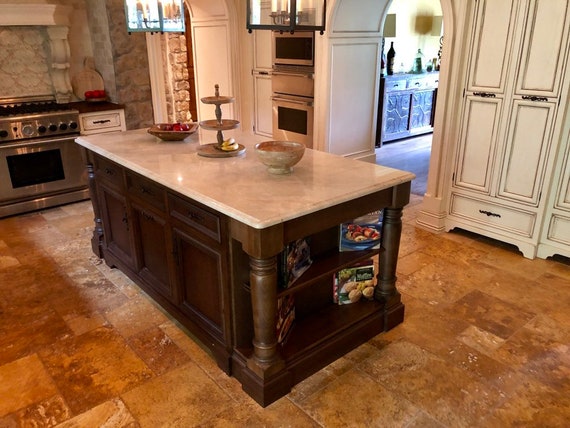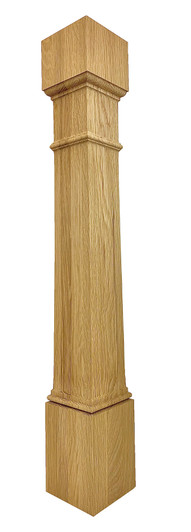How to Include a Kitchen Island Leg into Your Kitchen Remodel
Just How to Choose the Perfect Kitchen Area Island Leg to Enhance Your Kitchen Layout
Choosing the ideal cooking area island leg is a nuanced process that calls for cautious factor to consider of various aspects such as style product, design, and performance. A well-chosen leg can not just support the structure yet likewise offer as a specifying element that boosts the overall visual of your cooking area.
Examine Your Kitchen Area Style
When it concerns selecting a cooking area island leg, it's crucial to analyze your kitchen area style to make certain a cohesive design. The cooking area is often the heart of the home, and the island functions as a useful and visual focal factor. As a result, the option of leg design must reflect the general theme of your cooking area, whether it be contemporary, traditional, farmhouse, or commercial.
For example, in a modern kitchen area, sleek, straight legs in a minimal design might enhance the streamlined look. Conversely, a rustic kitchen area may take advantage of heavy, turned legs that communicate heat and personality. Take into consideration elaborately made legs that echo standard workmanship. if your kitchen area features a traditional style.
Pay attention to the proportions of both the island and the surrounding room; the leg's range ought to complement the general measurements. By aligning your leg selection with your kitchen area's style, you produce an unified and welcoming setting that shows your personal visual.
Think About Material Options
Choosing the right product for your kitchen area island leg is critical, as it impacts both sturdiness and visual appeal. Numerous materials provide unique benefits and can considerably affect the overall layout of your kitchen.
Wood is a prominent selection, known for its heat and convenience. It can be tarnished or repainted to match your kitchen's color pattern, giving a classic appearance. However, it might require even more upkeep to stop damages from wetness and heat.
Steel legs, such as stainless steel or wrought iron, evoke a modern-day and commercial feeling. They are immune and extremely durable to damages, making them excellent for high-traffic areas. Steel can additionally be finished in various methods, enabling personalization in regards to texture and color.
Another choice is composite products, which integrate looks with usefulness. These can simulate the look of timber or metal while commonly being lighter and less complicated to keep.
Last but not least, think about rock legs, which can bring a lavish touch however may require additional architectural support. Each material has its unique qualities, so it's important to select one that aligns with your kitchen's general layout vision while making certain long life and functionality.
Explore Design Attributes
Various style functions can boost the performance and visual charm of a cooking area island leg, making it an integral component of the total kitchen area layout. One essential element to consider is the design of the leg, which can range from typical transformed designs to sleek, modern lines. The option of style ought to match the existing kitchen cabinetry and fixtures, creating a cohesive appearance.
Along with style, the coating of the leg can dramatically affect the cooking area's visual allure. Choices such as repainted, discolored, or natural coatings can either highlight the leg as a statement item or allow it to mix effortlessly into the cooking area atmosphere. Ornamental aspects, such as embellishments or makings, can additionally include character and individuality, changing a simple leg right into a prime focus.
Additionally, including functional functions like open shelving or over here integrated storage can enhance utility while maintaining visual worth. The interplay of these style includes not only elevates the kitchen area island leg's appearance yet likewise adds to the general performance of the kitchen area. By thoughtfully picking these components, home owners can guarantee their cooking area island leg serves both decorative and sensible functions.
Determine Size and Height

Generally, the basic height for cooking area island legs is around 30 inches, which aligns with the height of basic counter original site tops and eating surfaces. If your island serves a double function, such as a morning meal bar, you may think about a greater leg measuring 36 inches. kitchen island leg. This elevation promotes an extra informal eating experience and suits bar feceses conveniently
In regards to size, the leg needs to not only supply appropriate support yet additionally maintain visual balance. A size of 3 to 5 inches is generally excellent, allowing for sufficient security without overpowering the general layout. Furthermore, think about the spacing in between the legs; they ought to be positioned to enable very easy movement and ease of access around the island.
Eventually, taking accurate dimensions and taking into consideration the intended usage of the kitchen area island will certainly guide you in choosing the ideal size and elevation of the legs, guaranteeing both visual allure and useful performance in your kitchen layout. kitchen island leg.
Budgeting for Your Option

Following, establish the style that straightens with your kitchen area's visual. Custom-made legs may come with a premium, while pre-fabricated choices typically offer price savings. It's important to stabilize your desired aesthetic with the practicalities of your budget.
Take into consideration extra prices that may arise, such as installation or completing. If you're preparing to work with a specialist for installment, consist of these expenses in your budget plan.
Lastly, allocate a contingency fund for unforeseen costs that might develop throughout the restoration. By thoroughly assessing these factors, you can make informed choices that not just boost your kitchen area's design yet likewise keep your renovation within economic reach. A tactical budget plan will ensure that you achieve the preferred appearance without jeopardizing your monetary goals.
Conclusion
Finally, choosing the suitable kitchen area island leg necessitates cautious factor to consider of numerous variables, including the total cooking area style, product options, layout attributes, and suitable dimensions. By aligning these aspects with the preferred visual and functionality, a visually enticing and unified cooking area island can be attained. Furthermore, budgeting for the chosen materials and setup will certainly ensure that the option procedure continues to be feasible and sensible, eventually improving the imp source kitchen's design and functionality.
When it comes to selecting a cooking area island leg, it's essential to analyze your kitchen area style to make certain a natural style.Numerous design attributes can boost the functionality and visual appeal of a kitchen area island leg, making it an essential part of the total cooking area style. The interaction of these style features not just raises the kitchen area island leg's look but additionally adds to the overall functionality of the cooking area area.Developing a spending plan for your kitchen area island leg is a crucial step that can significantly affect your general kitchen area remodelling costs.In conclusion, selecting the excellent cooking area island leg demands careful consideration of different elements, including the general kitchen design, product choices, layout functions, and proper dimensions.